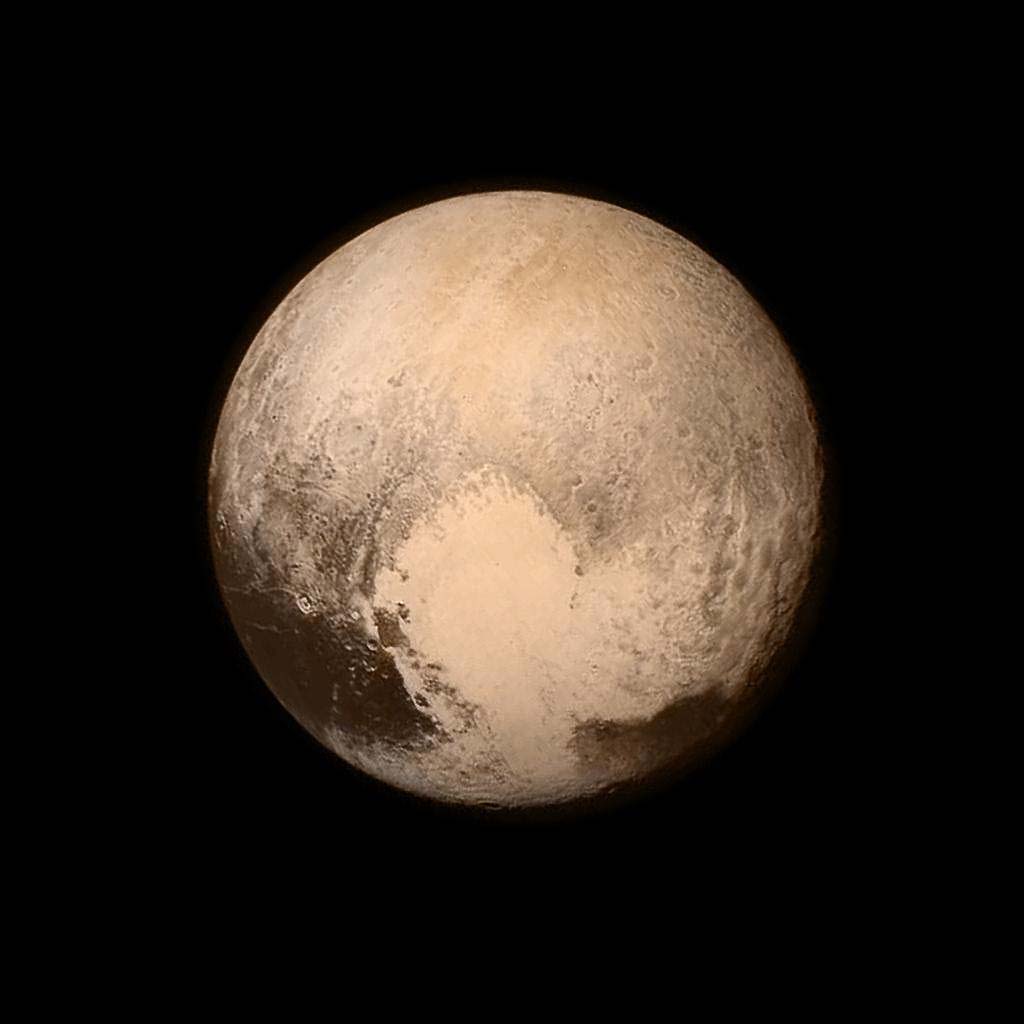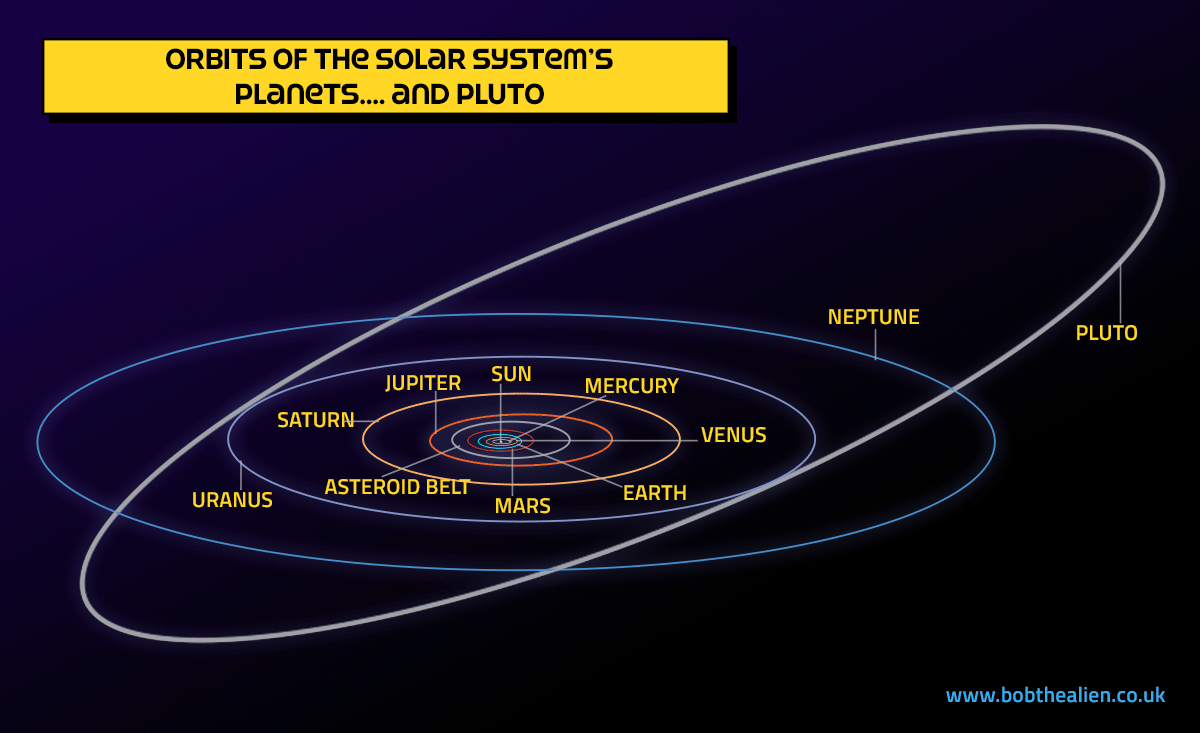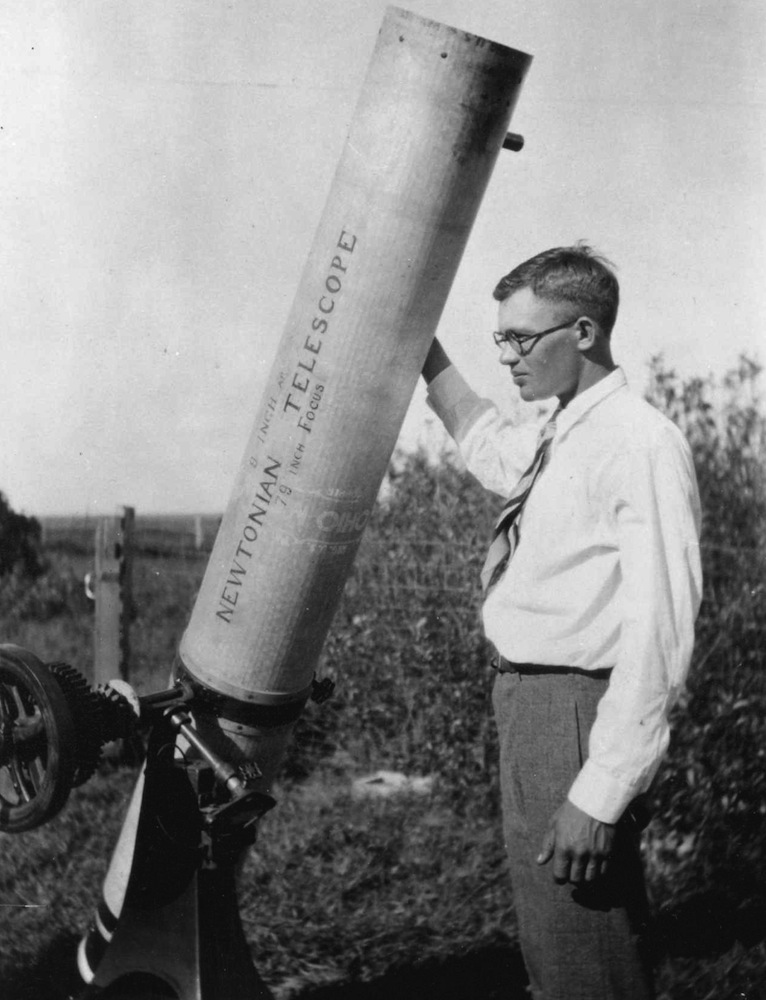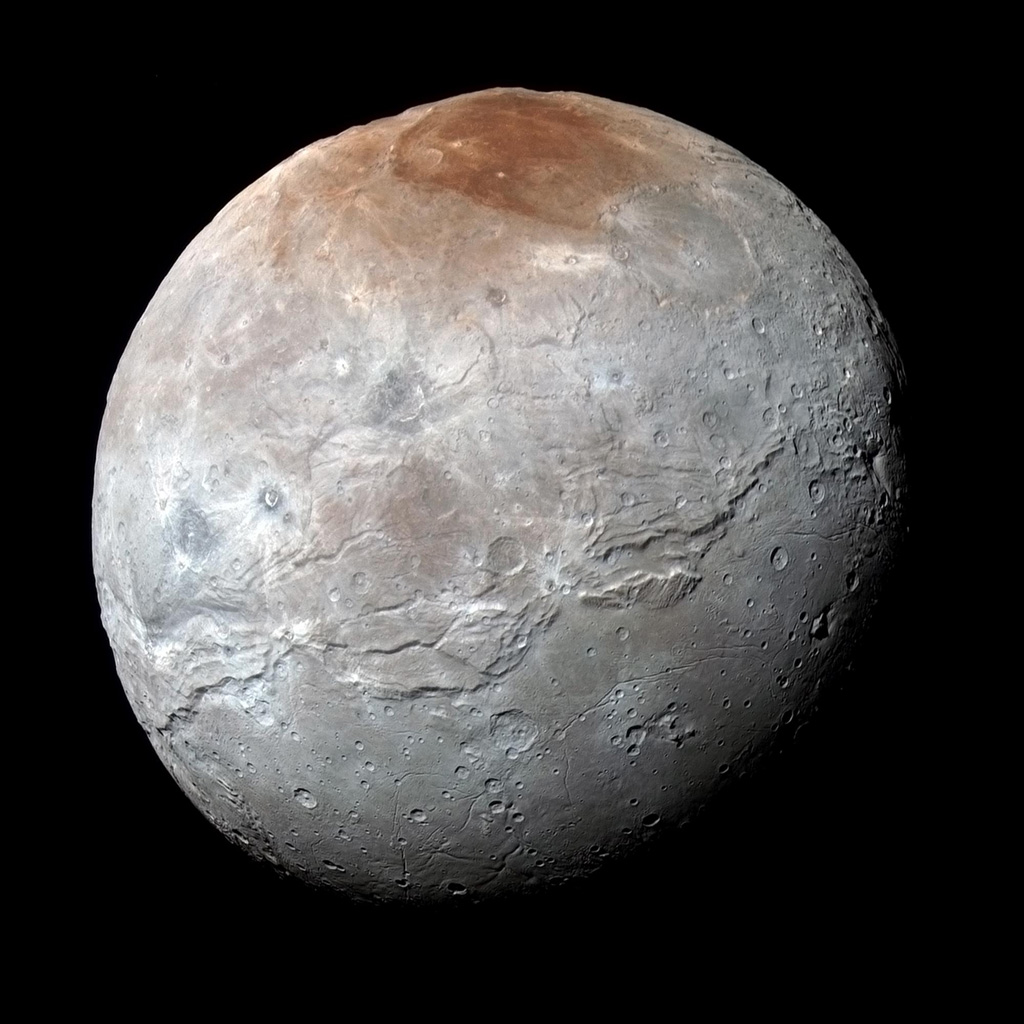Welcome to Pluto!
Pluto, once considered the ninth planet in the Solar System, is now classified as a dwarf planet, much to the disgruntlement of many. Situated in the Kuiper Belt, Pluto is an icy world of mountains, plains and valleys. With a diameter of 2,376 kilometres (1,476 miles), Pluto is smaller than all of the eight regular planets in the Solar System, and also smaller than seven of their moons, including Earth's moon. Even so, Pluto is the largest of the five dwarf planets. It has five moons, the largest of which is Charon. New Horizons visited Pluto in 2015, the only spacecraft to have done so.
 Pluto from New Horizons, July 2015, courtesy of NASA/John Hopkins University Applied Physics Laboratory/Southwest Research Institute
Pluto from New Horizons, July 2015, courtesy of NASA/John Hopkins University Applied Physics Laboratory/Southwest Research Institute
3,647,234,018 miles
39.24 A.U.
1,476 miles
-388 °F
Pluto's orbit is highly elliptical and inclined when compared to the eight major planets in the Solar System. It ranges from about 4.44 billion kilometers (2.76 billion miles) at its closest approach to the Sun, known as perihelion, to 7.38 billion kilometers (4.59 billion miles) at its farthest point, called aphelion. This eccentric orbit means that it's sometimes closer to the Sun than Neptune is. Its inclined orbit means that the two objects will never collide though. Pluto takes approximately 248 Earth years to complete one orbit around the Sun, meaning that, since its discovery in 1930, it hasn't even completed half an orbit yet.
A day on Pluto, the length of time it takes to spin once on its axis, is just under six and a half Earth days (6.4 days).


Pluto was discovered by American astronomer, Clyde Tombaugh, on 18th February 1930 at the Lowell Observatory in Flagstaff, Arizona. The Lowell Observatory was founded by Percival Lowell, an astronomer who believed that another planet existed in the Solar System beyond the orbit of Neptune, based on disturbancies in the orbit of Neptune - something which could be explained by the gravity of another planet. Lowell calculated where that planet might lie, but died in 1915 before it could be found
Other astronomers continued the search at the Lowell Observatory, including Tombaugh from 1929. The method of finding Pluto was by browsing through photographic plates of regions of space, and trying to locate a planet in them. Tombaugh would use a device called a blink comparator to quickly flick between two photos with the aim being to spot a difference in them. Eventually, he spotted an object in two different places on two photos, and further observations of the region resulted in the new object being declared a planet.
The new planet became the Solar System's ninth planet, a title it held until 2006. Its name, Pluto, was suggested by Venetia Burney, a 11 year old from England. Clyde Tombaugh died in 1997 and some of his ashes were taken onboard the New Horizons spacecraft which was the first (and so far only) spacecraft to explore Pluto.

Pluto has five moons orbiting it. These are Charon, Styx, Nix, Kerberos and Hydra. Charon is a large, mostly spherical moon. The others are small objects, more than likely debris from a collision that Pluto had with another object once upon a time. These moons have chaotic orbits, tumbling around Pluto. As Pluto is the Greek god of the underworld, all of its moons have suitably creepy names.
Charon: Discovered in 1978 by James Christy, Charon is Pluto's largest moon. It has a diameter of 1,212 kilometres (753 miles) and is situated at a distance of 19,596 kilometres (12,176 miles) from Pluto. Charon doesn't actually orbit Pluto - instead the two objects appear to orbit around an invisible point between them. They are tidally locked and constantly face each other. In Greek mythology, Charon is ferryman of the dead, delivering them to Pluto's underworld.
Styx: Discovered in 2012 by a team of astronomers led by Mark R. Showalter using images taken by the Hubble Space Telescope. Styx is Pluto's smallest moon, with a diameter of only 16 kilometres. It was very nearly called Vulcan, a name suggested by actor William Shatner, who played Captain Kirk in Star Trek. The IAU rejected that name. Boo! In Greek mythology, Styx is the goddess of the river Styx which surrounds the underworld.
Nix: Discovered in 2005 by members of the Pluto Companion Team using images taken by the Hubble Space Telescope. Nix has an elongated shape, stretching about 50 km (30 miles) on its longest side and 31 km (19 miles) on its shortest. In Greek mythology, Nix (spelled Nyx) is goddess of the night
Kerberos: Discovered in 2011 by a team of astronomers led by Mark R. Showalter using images taken by the Hubble Space Telescope, Kerberos is Pluto's second smallest moon with a diameter on its largest axis of 19 kilometres (12 miles). It is thought that Kerberos, and Pluto's other small moons, are debris left over from a collision with Pluto and another object. In Greek mythology, Kerberos (spelled Cerberus) is a three-headed dog that guards the exit to the underworld, preventing the dead from leaving it.
Hydra: Discovered in 2005 by members of the Pluto Companion Team using images taken by the Hubble Space Telescope. It measures 51 kilometres (31 miles) lengthways and 31 kilometres (19 miles) widthways (if that's even a word). It appears to be coated in water ice so is highly reflective. In mythology, Hydra is a multi-headed serpent that guards the entrance to the underworld.
When Pluto was discovered in 1930, it quickly became recognised as the ninth planet in the Solar System. Even so, its status as a planet was often questioned by scientists due to its tiny size and odd, tilted orbit. It was always the odd one out. There was no other object like Pluto, but it couldn't be a moon, it couldn't be a comet, so the only thing it could be was a planet.
That was until other worlds were discovered that were more like Pluto. In particular was Eris, a Pluto-sized object that was discovered in 2005. Also like Pluto, these newly-discovered worlds were situated out in the depths of the Solar System, in the Kuiper Belt, and had eccentric elongated and tilted orbits.
In 2006, when it came to deciding how to categorise these new objects, the International Astronomical Union (IAU) decided to create a brand new classification for them: the dwarf planet. A dwarf planet is an object that orbits the Sun, is large enough to be mostly spherical, but shares its orbital zone with other objects. Eris became a dwarf planet, along with Ceres, Haumea and Makemake. The new classification also meant that Pluto needed to be reclassified. So in August 2006, it losts its status as the Solar System's ninth planet, becoming a dwarf planet instead. Even though it's no longer the Solar System's odd ball, people still insist that it should be a planet and continue to fight for its planetary honour.





